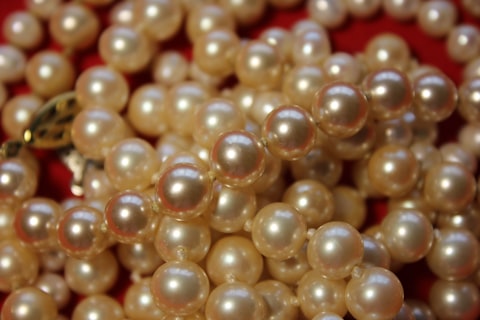How to Make Pickled Eggplant with Walnuts: A Delicious and Easy Recipe
Pickled eggplant with walnuts is a popular dish in many Mediterranean and Middle Eastern countries. It is a delicious and tangy side dish that can be served with a variety of main courses. The combination of eggplant and walnuts creates a unique and flavorful taste that is sure to impress your taste buds. In this article, we will guide you through the process of making pickled eggplant with walnuts, step by step. So, let's get started!
Outline:
I. Introduction
A. Explanation of pickled eggplant with walnuts
B. Brief history of the dish
II. Ingredients
A. List of ingredients
B. Importance of using fresh and high-quality ingredients
III. Preparation
A. Step-by-step guide to preparing the eggplant
B. Importance of salting the eggplant
IV. Pickling
A. Step-by-step guide to pickling the eggplant
B. Importance of using vinegar and spices
V. Adding Walnuts
A. Step-by-step guide to adding walnuts to the pickled eggplant
B. Importance of using toasted walnuts
VI. Serving and Storing
A. Tips for serving pickled eggplant with walnuts
B. Proper storage techniques
VII. Conclusion
A. Recap of the recipe
B. Final thoughts on pickled eggplant with walnuts
VIII. FAQs
A. What is the best type of eggplant to use for this recipe?
B. Can I use other types of nuts instead of walnuts?
C. How long can I store pickled eggplant with walnuts?
D. Can I add other spices to the pickling mixture?
E. Can I use this recipe for other vegetables besides eggplant?
Pickled eggplant with walnuts is a traditional dish that has been enjoyed for centuries in many Mediterranean and Middle Eastern countries. It is a simple yet flavorful side dish that can be served with a variety of main courses. The tangy and slightly sweet taste of the pickled eggplant combined with the crunchiness of the walnuts creates a unique and delicious flavor that is sure to please your taste buds.
To make pickled eggplant with walnuts, you will need the following ingredients:
-
2 large eggplants
-
Salt
-
White vinegar
-
Sugar
-
Garlic cloves
-
Red pepper flakes
-
Fresh parsley
-
Walnuts
It is important to use fresh and high-quality ingredients to ensure the best taste and texture of the dish. Choose eggplants that are firm and shiny, with no bruises or blemishes. Fresh walnuts are also essential for this recipe, as they add a nice crunch and flavor to the dish.
Preparation:
-
Start by washing and drying the eggplants. Cut off the stem and slice them into 1/4 inch rounds.
-
Place the eggplant slices in a colander and sprinkle them with salt. Let them sit for about 30 minutes to draw out any excess moisture.
-
After 30 minutes, rinse the eggplant slices and pat them dry with a paper towel. This step is important as it helps to remove any bitterness from the eggplant.
-
In a large pot, bring water to a boil and add the eggplant slices. Let them cook for about 5 minutes, then drain and let them cool.
Pickling:
-
In a separate pot, mix together 1 cup of white vinegar, 1/4 cup of sugar, 2 cloves of minced garlic, 1 teaspoon of red pepper flakes, and a handful of chopped fresh parsley.
-
Bring the mixture to a boil, then reduce the heat and let it simmer for about 5 minutes.
-
Add the eggplant slices to the pickling mixture and let them cook for an additional 5 minutes.
-
Remove the pot from the heat and let it cool.
Adding Walnuts:
- While the pickled eggplant is cooling, toast a handful of walnuts in a pan over medium heat for about 5 minutes. This step is important as it brings out the flavor of the walnuts.
- Once the eggplant is cooled, add the toasted walnuts to the pot and mix well.
Serving and Storing:
Pickled eggplant with walnuts can be served immediately or stored in an
airtight container in the refrigerator for up to a week. It is best
served at room temperature and makes a great side dish for grilled
meats, sandwiches, or as part of a mezze platter.
In conclusion, pickled eggplant with walnuts is a delicious and easy dish to make at home. It is a great way to add some variety to your meals and impress your family and friends with your cooking skills. So, next time you're looking for a tasty side dish, give this recipe a try and enjoy the unique and flavorful taste of pickled eggplant with walnuts.
FAQs:
Q: What is the best type of eggplant to use for this recipe?
A: The best type of eggplant to use is the Italian or globe eggplant, as they have a mild and sweet flavor.
Q: Can I use other types of nuts instead of walnuts?
A: Yes, you can use other nuts such as almonds or pine nuts, but walnuts are the traditional choice for this dish.
Q: How long can I store pickled eggplant with walnuts?
A: Pickled eggplant with walnuts can be stored in the refrigerator for up to a week.
Q: Can I add other spices to the pickling mixture?
A: Yes, you can add other spices such as cumin, coriander, or oregano to the pickling mixture to enhance the flavor.
Q: Can I use this recipe for other vegetables besides eggplant?
A: Yes, you can use this recipe for other vegetables such as zucchini,
carrots, or cauliflower. Just adjust the cooking time accordingly.
In conclusion, pickled eggplant with walnuts is a delicious and easy dish to make at home. It is a great way to add some variety to your meals and impress your family and friends with your cooking skills. So, next time you're looking for a tasty side dish, give this recipe a try and enjoy the unique and flavorful taste of pickled eggplant with walnuts.
How to Make Pickled Eggplant with Walnuts: A Delicious and Easy Recipe
Keywords
Pickled Eggplant Walnuts Mediterranean Dish Middle Eastern Cuisine Side Dish Recipe
Introduction
🍆 Pickled eggplant with walnuts is a tangy side dish popular in Mediterranean and Middle Eastern cuisines. This article provides a step-by-step guide to creating this flavorful dish.
Ingredients
🛒 Essential ingredients for the recipe include:
-
Eggplants: Firm and shiny, without blemishes.
-
Walnuts: Fresh and toasted for added flavor.
-
Vinegar, Salt, Sugar: For the pickling process.
-
Garlic, Red Pepper Flakes, Parsley: To enhance the taste.
Preparation
🔪 Preparing the eggplant involves:
-
Slicing and salting to draw out moisture.
-
Boiling briefly to soften.
-
Importance of using fresh ingredients for the best flavor.
Pickling
🥣 The pickling process includes:
- Creating a mixture of vinegar, sugar, and spices.
- Simmering the eggplant in the pickling mixture.
Adding Walnuts
🌰 Incorporating walnuts involves:
- Toasting to bring out the nutty flavor.
- Mixing with the cooled pickled eggplant.
Serving and Storing
🍽️ Tips for serving and storage:
- Serve at room temperature as a side dish.
- Store in the refrigerator for up to a week.
Conclusion
👩🍳 Recap of the recipe and encouragement to try this unique dish.
FAQs
❓ Common questions about the recipe:
-
Best type of eggplant to use.
-
Alternative nuts and spices.
-
Storage duration.
-
Adapting the recipe for other vegetables.
Images


Figures
Recipe Flow:



















































